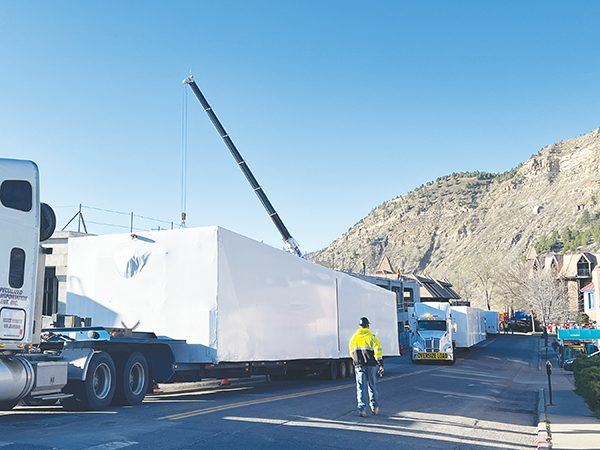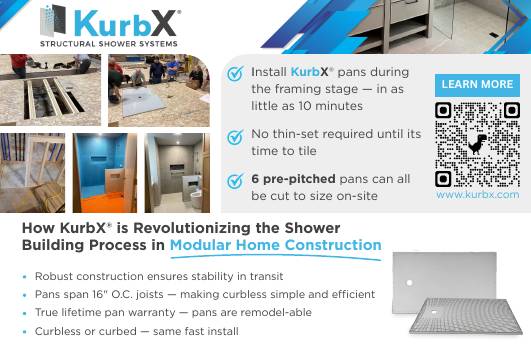From busted wraps to legal headaches, here’s what first-timers need to know about moving modules.
- Modular construction offers speed and cost advantages, but transportation and logistics can undermine those benefits.
- Factory delays from supply shortages or labor gaps can cause setbacks at the construction site.
- Transport costs rise with larger modules and vary with local, state and city regulations.
Offsite construction in general, and modular in particular, is faster than traditional construction and can offer lower costs. Modular homes have been around since the 1800s, but the industry has leapt forward in sophistication since the beginning of the 2000s with the infusion of technologies like BIM, 3D printing, factory automation and industry-specific software.
And while modular is still a small portion of the market — the Modular Building Institute estimates that it’s used for 3% of new home builds — there seems to be an industry consensus that that portion will grow in the coming years.
Despite these advances and prospects for growth, however, the processes used in modular construction still have room for improvement, and some of those processes can be tricky for those who don’t understand them.
One of the trickiest is over-the-road module transport, which can become a minefield of unexpected costs. If you’re just getting started with modular construction, what do you need to know about transporting and staging modules? And what can you do to keep costs in check?
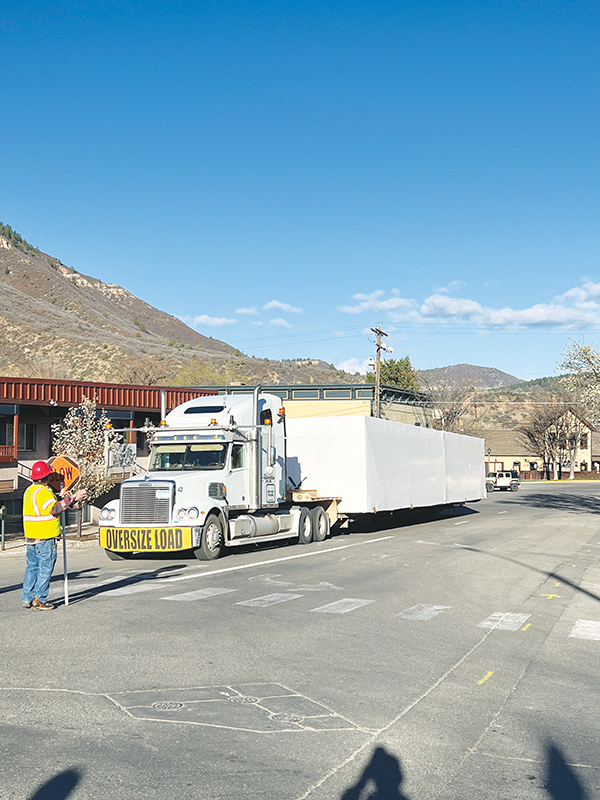
Photo courtesy of Specialized Transportation
Plan for Delays
The job of transporting modules starts at the factory where production occurs. Ideally, the factory is close enough to the jobsite that transportation will be minimized. However, some crews are moving modules very long distances.
The transports company’s job is to get the modules to the site on time, but factory issues can sometimes prevent that from happening. “The most difficult part of modular construction is the work that takes place on the factory floor because there are so many details we need to get right,” says Carson Holmquist, CEO and Co-Founder of Stream Modular in Scottsdale, Arizona. “Every other stakeholder in the process is reliant on the work of the factory.”
These details include the management of the supply chain. With a complex supply chain, a single material shortage can derail a project timeline and drive up costs. In fact, despite the time savings touted by the modular industry, building a modular home does not guarantee that there won’t be delays.
For example, say that a module is completed in the factory sans the windows, which the factory has yet to receive. Factory workers must wrap the modules and store them outside until the windows arrive. Once the windows have been received, the modules must be returned to the factory and unwrapped. After the windows have been installed, the module must be rewrapped. This, of course, holds up the schedule for the builder.
Chad Crosby, Owner of Halo Halo LLC (an independent Landstar Agency and logistics and transportation company based in Portland, Oregon) says that supply chain problems have been more common lately, and that factories have also been faced with labor challenges. “Manufacturers are not meeting schedules, especially this year,” he says. “It seems like they’re short on materials or on workers, so they overcommit and underdeliver.”
That means more modules are coming out of the factory incomplete, leaving work to be done in the yards. “It’s leading to difficulties meeting customers’ timelines,” Crosby says.
Modules awaiting shipment must also be stored appropriately — whether on the factory grounds or in a staging yard — and they must be protected from the elements. That’s why they’re wrapped. Badly detailed wrap can also hold up the builder’s schedule. “We’ve transported modules that were poorly wrapped,” Crosby says. “The issue wasn’t discovered until they were unsealed, which led to delays.”
The lesson for builders? Doing one modular project puts you at risk of downtime caused by factory delays. It’s a good idea to have other work to keep your crew busy.
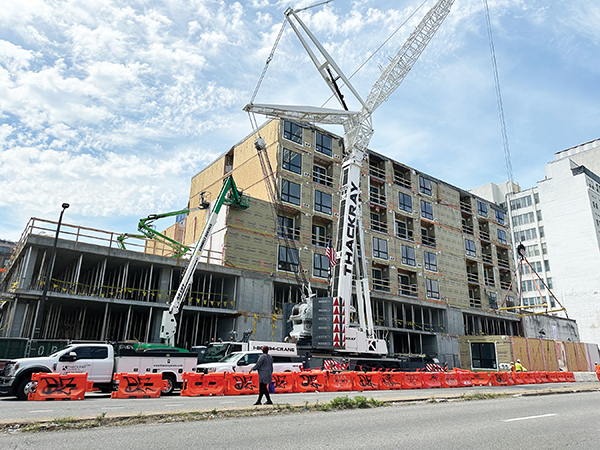
Photo courtesy of Specialized Transportation
Work With the Law
Not surprisingly, the bigger the module, the more it will cost to haul it over the road. “We can transport anything, but taller and wider modules cost more,” says Daryl Snader, Owner of Specialized Transportation in Victoria, Michigan.
Another driver of transport costs is regulations. Snader notes that different states, and even cities, impose different regulations for transporting modules. “What’s allowed in one state may not be allowed in another,” he says. “For instance, we have to be aware of the regulations regarding dimensions in each state.”
He says it took him and his team four-plus years to learn the regulations that affect his company, and establish relationships that help with compliance.
As an example of a local requirement, Snader describes a job in Philadelphia, Pa. that required 180 modules. “We were transporting modules from a staging yard in Philadelphia to the jobsite. Every time we pulled out of the yard, the law dictated that the police escort us to the project site,” Snader says.
Each night before moving modules, the team needed to contact the police to confirm that the escort would happen, and when.
Cooperating with the authorities and following all the rules will pay dividends. “Over the years, we’ve established good relationships with the police,” Snader said. “They know us, they understand what we do, and they are helpful.”
Module size also determines if there will be a requirement for pilot cars and chase cars when moving a module down the road. Each state has its own regulations regarding the dimensions at which pilot and/or chase cars will be needed.
Snader says pilot cars have value beyond compliance with the law because they enhance safety greatly and help keep modules moving. “They help drivers safely get around obstacles, can warn/block traffic, and can increase the speed of transport.”
The lesson: It really matters who moves your modules. Look for a transport company that knows how to control costs and that has good relations with the authorities where you plan to build.
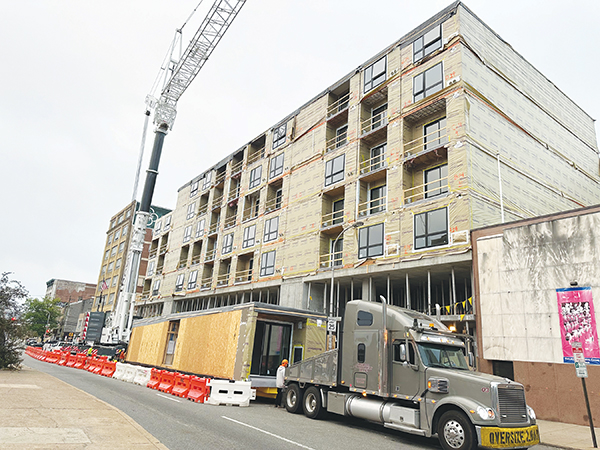
Photo courtesy of Specialized Transportation
Staging Yards
Staging yard expenses can get out of hand if not well managed. The goal for modular transportation is to reduce touches because each move adds expense to the job. “The ideal would be to go from the production facility directly to the jobsite, eliminating unnecessary storage or transport,” Holmquist says. Yet, this rarely occurs.
Instead, modules often must be stored in a staging yard until the set crew is ready to stack them at the jobsite, which adds cost to the job. This is a topic in itself. To learn more, see “Staging Yard Management,” in this issue.
The point of all this is that moving modules is a big expense. In addition, there may be delays that the builder can’t control.
A good plan conceived and executed by experienced players can keep prices in the expected range and increase the chance of timely deliveries. However, there are no guarantees and unexpected things happen. Patience, detailed planning and flexibility are key.
Larry Bernstein is a freelance writer based in northern New Jersey. He focuses on all things construction. Learn more about him on his LinkedIn profile.


